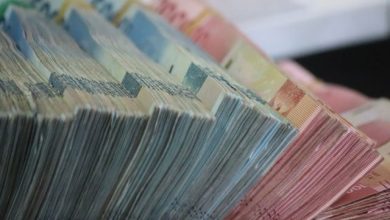SBP boosts bank incentives to strengthen inflows

KARACHI:
Pakistan’s central bank has significantly increased incentives for banks and currency exchange companies in a bid to attract more remittances from overseas Pakistanis. The goal is to maintain robust inflows, which play a crucial role in financing imports and repaying foreign debt.Additionally, the State Bank of Pakistan (SBP) has raised the financing limit for small enterprises to Rs100 million and for medium enterprises to Rs500 million, further supporting business growth in the country.According to a notification from the SBP, the base rate for exchange companies has been doubled to Rs2 per US dollar deposited into the banking system, effective from October 1, 2024, up from Rs1 previously. The notification states, “Exchange Companies (ECs) will be provided a base rate of Rs2 for each US dollar of home remittances surrendered to SBP-designated banks.”Moreover, ECs will be compensated Rs3 for each incremental US dollar surrendered, for growth in home remittances of up to 5% or $25 million, whichever is lower, compared to the previous year. An additional Rs4 per dollar will be awarded for remittance growth exceeding 5% or $25 million from the prior year, the notification continued. The SBP will evaluate the performance of ECs on a monthly basis, and payments will be reimbursed accordingly, with any adjustments made in the final quarter of the fiscal year.
In a separate notification, the central bank has further incentivised authorised dealers (ADs), primarily banks, and microfinance banks (MFBs) to maximise their efforts in increasing remittance inflows. Starting from October 1, 2024, ADs and MFBs will be reimbursed SAR 20 for every eligible home remittance transaction of $100 or more under the fixed component.Additionally, under the variable component, an extra reimbursement of SAR 8 per incremental transaction will be provided for growth in remittances of up to 10%, or $100 million, compared to the previous year. For growth exceeding 10% or $100 million, an additional SAR 7 will be paid per transaction, according to the notification. Previously, banks received a total reimbursement of SAR 30 per transaction. However, the central bank has now split the incentive into fixed and variable components to encourage banks to further boost remittance inflows.SME FinancingIn efforts to promote the financing of small and medium enterprises (SMEs), the SBP has revised upward the per-party exposure limits for these businesses. Small enterprises can now avail financing of up to Rs100 million from a single bank or from all banks and DFIs (Development Financial Institutions) combined. Similarly, medium enterprises can secure financing of up to Rs500 million, including leased assets, from a single bank or from all banks and DFIs collectively. Banks and DFIs are permitted to deduct the value of liquid assets, such as bank deposits and securities, under their lien when calculating per-party exposure limits for SME financing.to The Express Tribune, Zafar Paracha, Secretary General of the Exchange Companies Association of Pakistan (ECAP), explained that the central bank has increased incentives for exchange companies and banks to ensure steady remittance inflows. He added that remittances grew by 11%, reaching $30.25 billion in FY24 compared to FY23. Inflows have remained strong, averaging $3 billion per month in the first two months of FY25, compared to an average of $2.5 billion per month in FY24.Market analysts anticipate remittance inflows will remain strong, with an expected $3 billion for September as well. Paracha noted that exchange companies attracted around $5 billion in remittances during FY24, up from $4.25 billion in FY23. He also mentioned that exchange companies could bring in even more remittances if they were given incentives equivalent to those offered to banks, which currently receive Rs15-20 per dollar, compared to Rs2 offered to exchange companies.





